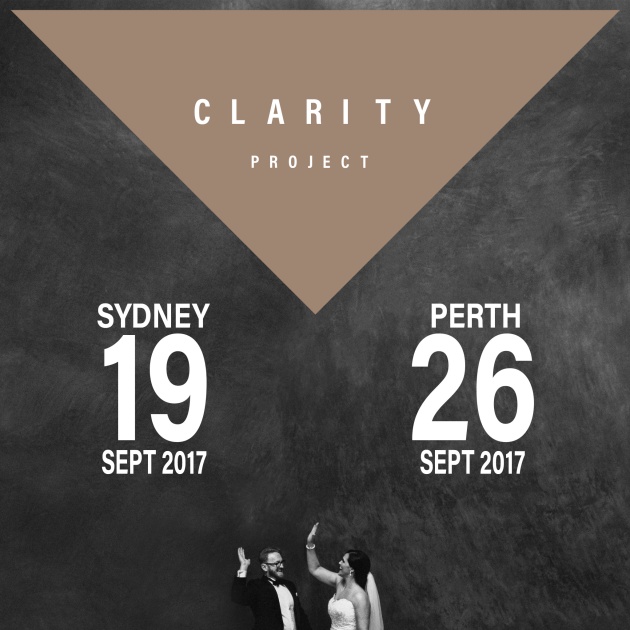Business advice I wish I had when I started
Try a little bit of laziness
Everyone is no doubt familiar with the suggestion to work smarter, not harder. The processes or systems we use for business come from years of refinement as we learn the hard way, through trial and error. I don’t know about you, but when I started working for myself, no one ever showed me how to set up a business. I had to figure out what I needed to do and how I could achieve it with the tools that I had. And fair enough.

What I have come to realise is that the less I want to work and the more I want time for myself, the more efficient and effective my business has become. I would get frustrated with time-consuming tasks and invest the time into researching ways to streamline the process. So the saying should instead be, work your ass off in the beginning to find the best way to do the job, then enjoy the system and extra time later!
Given the pace at which the photography industry moves, in the age of instant communication, if you don’t consistently adapt and embrace new technology, it’s pretty easy to get left in the dust.
My favourite place to start refining the business is where I struggle the most. For example, I really hate data entry and I'm super slow at writing e-mails. I also hate phone enquiries – they always seem to catch me off guard. Finding a way to capture client data from an online enquiry and have it integrate with my client relationship management (CRM) software, and then having all of my e-mail responses as templates meant I could have software automate just about all of my actions.
Studio Ninja has refined this process for me even further, as has ShootProof for my client image galleries and print sales. You work hard at the start setting up your automations, then you let your virtual assistant do the rest. Find your weaknesses and make them your strengths.

Shortcuts to experience
The ability to learn from other people’s hard work via social media networks or workshops, seminars, and retreats is a fast way to get relevant and current insights into the industry and current best-practice. I'm a big believer in the long game and investing in formal education and continual professional development. Attention and focus on the latter, specifically, can make all the difference between whether you’re successful in the industry, or end up leaving it. And the hardest part might be deciding what’s of relevance to you. But the bottom line is that as a working professional, you can’t do nothing.

Engage deeply with people and take a genuine interest
Domestic photography is very much a people business, and a lot of the time the only difference the average customer can discern is in the experience that they have with the business or photographer, and this is especially true where the standard of photography produced is generally of the same high quality. However, that’s not always the case, and in some instances, the general public can be particularly discerning. And being able to build rapport with people quickly and effortlessly will no doubt give you a massive advantage. People are attracted to commonality, so clients will relate to businesses/photographers that they have similarities with, or aspire to be like. Finding things in common with your clients is also a fast way to make them feel comfortable and gain their trust.
You can watch all the Tony Robbins videos and study the art of communication, but if your engagement doesn't come from a genuine place, you can come across as a slimy used-car salesman. Your belief in what you do and the reason why you do it, or the values you hold in regards to domestic photography, act as the background to your authenticity.

Find your photography voice
In order to go about finding your photography voice, you first need to start with finding your own actual voice. Finding your unique photographic style can take years of refinement, and, to be honest, I see style as something that evolves with you as you become more defined as a human and your choices become more educated and deliberate, and as your taste in the way things look is more discerning.
However, if you need to start somewhere, first look at yourself and the way you communicate; person to person, and then person to group. How do you use language? What is your style of communication? Fast, slow, loud, soft? Casual or formal? Jovial or serious? All of these things can help you identify an approach to shooting that will be a good reflection of your personality. If your personal style matches your shooting style, you will start to attract people that relate to your work and will relate to you. And that’s the whole commonality thing kicking in again as well.

Do a great job and look after your people
At the end of the day if everything seems way too much, don’t forget to just keep it simple. Work your ass off, bend over backwards, and make people feel like royalty. Because if you look after people and do a good job, it won’t matter if you have a shitty website or only have 127 followers on social media, people will recommend you, and that is by far the most powerful form of advertising. Bonus points if you find creative ways to exceed peoples’ expectations.

About Clarity Project
The Clarity Project is a collaboration between two of Australia’s best, and most awarded wedding photographers: James Simmons and Kelly Tunney. They describe the workshop as “a non-cheesy, down-to-earth wedding photography conversation; modest and a little bit real. This whole project is about finding (on-going) clarity in your photography and in your business.”
Follow this link for full details, including what dates, pricing, and what the workshop covers.

About James Simmons

Writing bios are James Simmons’ Kryptonite, because it’s usually where modesty takes a back seat while casually claiming prestige by name dropping sponsors and listing awards for shameless self-promotion in an attempt to convince you that he's qualified to be here. So instead, this is what makes him tick.
Simmons loves giving people the confidence to enjoy being photographed. He is all about capturing natural expression and real emotion. He loves to reveal the joy, romance, and adventure between couples. Getting couples to relax and be themselves in front of the camera is totally his jam.
His major influences have been studying photojournalism and he's inspired by the engagement that is required from each of his subjects. The need to tell a story is paramount, and capturing all the photographic elements is challenging.
Simmons is not too shabby in the winning awards department either. He has won the title of the AIPP Australian Wedding Photographer of the Year and the big one in 2014, winning the prestigious AIPP Australian Photographer of the Year award. He is also a current brand ambassador for Ilford representing as an Ilford Master
